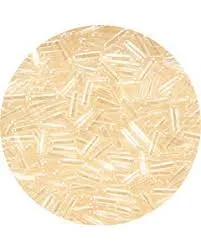
Nov . 22, 2024 20:33 Back to list
redispersible polymer
The Versatility of Redispersible Polymers Applications and Benefits
Redispersible polymers are an essential ingredient in various industries, particularly in construction and building materials, adhesives, coatings, and the production of composites. These polymers are typically produced as a fine powder through the spray-drying of aqueous polymer dispersions. Once they come into contact with water, they re-disperse, forming a film or matrix that enhances the properties of the host material. This article delves into the characteristics, applications, and benefits of redispersible polymers.
Characteristics of Redispersible Polymers
Redispersible polymers possess several distinctive features that make them valuable in diverse applications. First and foremost, they are designed to enhance the mechanical properties of various formulations. By providing significant improvements in adhesion, flexibility, and tensile strength, these polymers contribute to the durability and longevity of products.
Additionally, redispersible polymers improve the workability of construction materials. They can enhance the flow, spreadability, and leveling properties of mortar, plaster, and adhesives, making application easier and more efficient. Moreover, their water retention capabilities prevent the rapid drying of mixes, allowing for extended working times and improved bonding quality.
Applications in Construction
One of the most prominent applications of redispersible polymers is in the construction sector. They are commonly used in cementitious materials such as tile adhesives, joint compounds, and repair mortars. The addition of redispersible polymer powders allows these materials to achieve high bond strength, flexibility, and crack resistance. For instance, tile adhesives that incorporate redispersible polymers can provide superior performance, allowing for the installation of tiles in challenging conditions, including moist environments.
Another significant application is within exterior wall systems. Redispersible polymers serve as additives in insulation mortars and thin-coat plasters, enhancing adhesion to substrates and improving weather resistance. This characteristic is vital for maintaining the integrity of buildings in diverse climates, promoting energy efficiency and structural stability.
redispersible polymer

Benefits in Other Industries
Beyond construction, redispersible polymers found widespread use in the coatings industry. These polymers can enhance the performance of paints and coatings by improving their adhesion, flexibility, and resistance to weathering and abrasion. Redispersible polymers help in formulating high-quality paints that can withstand harsh environmental conditions while maintaining their aesthetic appeal.
In adhesives, redispersible polymers improve the final bonding strength of products, making them essential in both industrial and consumer applications—ranging from woodworking to textiles. These polymers help create stronger, more durable bonds while also allowing for easier application due to their improved flow properties.
Environmental Considerations
The use of redispersible polymers also aligns with modern trends of sustainability in various industries. They often allow manufacturers to develop high-performance products while reducing the need for solvents and other volatile organic compounds (VOCs). Additionally, these polymers can often be formulated to be biodegradable or derived from renewable sources, contributing to more sustainable production practices.
Conclusion
Redispersible polymers have become a vital component in numerous applications across various industries. Their ability to enhance mechanical properties, improve workability, and contribute to the longevity of products makes them invaluable, particularly in the construction sector. As industries strive for sustainability and performance, the role of redispersible polymers is likely to grow, offering innovative solutions to meet the demands of modern applications. With continuous advancements in polymer technology, we can expect even broader applications and improvements in the efficacy of these versatile materials in the years to come.
-
Versatile Hpmc Uses in Different Industries
NewsJun.19,2025
-
Redispersible Powder's Role in Enhancing Durability of Construction Products
NewsJun.19,2025
-
Hydroxyethyl Cellulose Applications Driving Green Industrial Processes
NewsJun.19,2025
-
Exploring Different Redispersible Polymer Powder
NewsJun.19,2025
-
Choosing the Right Mortar Bonding Agent
NewsJun.19,2025
-
Applications and Significance of China Hpmc in Modern Industries
NewsJun.19,2025







